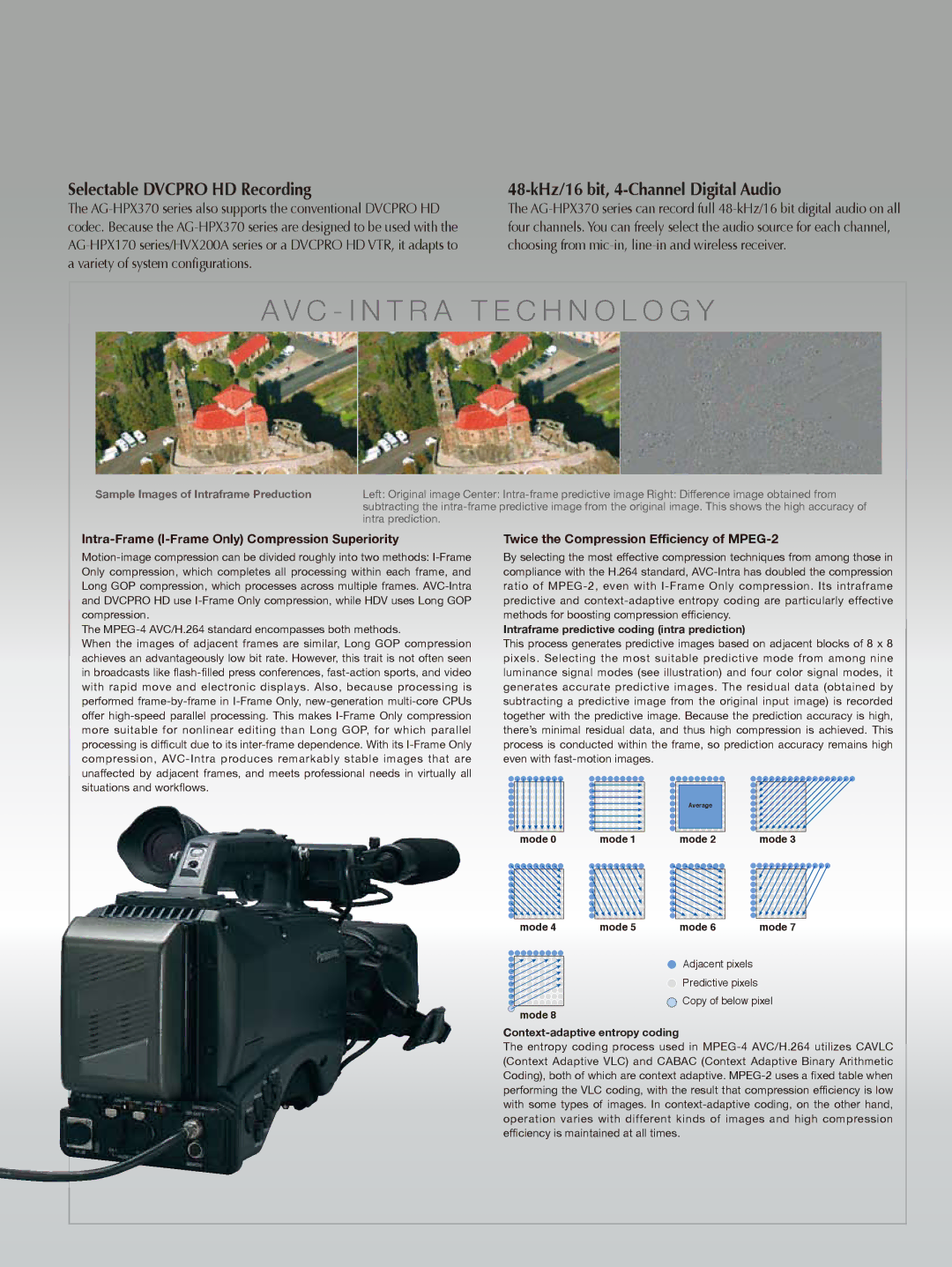
Selectable DVCPRO HD Recording
The
48-kHz/16 bit, 4-Channel Digital Audio
The
A V C - I n t r a T e c h n o l o g y
Sample Images of Intraframe Preduction | Left: Original image Center: |
| subtracting the |
| intra prediction. |
Intra-Frame (I-Frame Only) Compression Superiority
The
When the images of adjacent frames are similar, Long GOP compression achieves an advantageously low bit rate. However, this trait is not often seen in broadcasts like
Twice the Compression Efficiency of MPEG-2
By selecting the most effective compression techniques from among those in compliance with the H.264 standard,
Intraframe predictive coding (intra prediction)
This process generates predictive images based on adjacent blocks of 8 x 8 pixels. Selecting the most suitable predictive mode from among nine luminance signal modes (see illustration) and four color signal modes, it generates accurate predictive images. The residual data (obtained by subtracting a predictive image from the original input image) is recorded together with the predictive image. Because the prediction accuracy is high, there’s minimal residual data, and thus high compression is achieved. This process is conducted within the frame, so prediction accuracy remains high even with
situations and workflows.
mode 0
mode 4 |
mode 8 |
mode 1
mode 5 |
Average |
|
mode 2 | mode 3 |
mode 6 | mode 7 |
![]() Adjacent pixels
Adjacent pixels ![]() Predictive pixels
Predictive pixels ![]() Copy of below pixel
Copy of below pixel
Context-adaptive entropy coding
The entropy coding process used in
